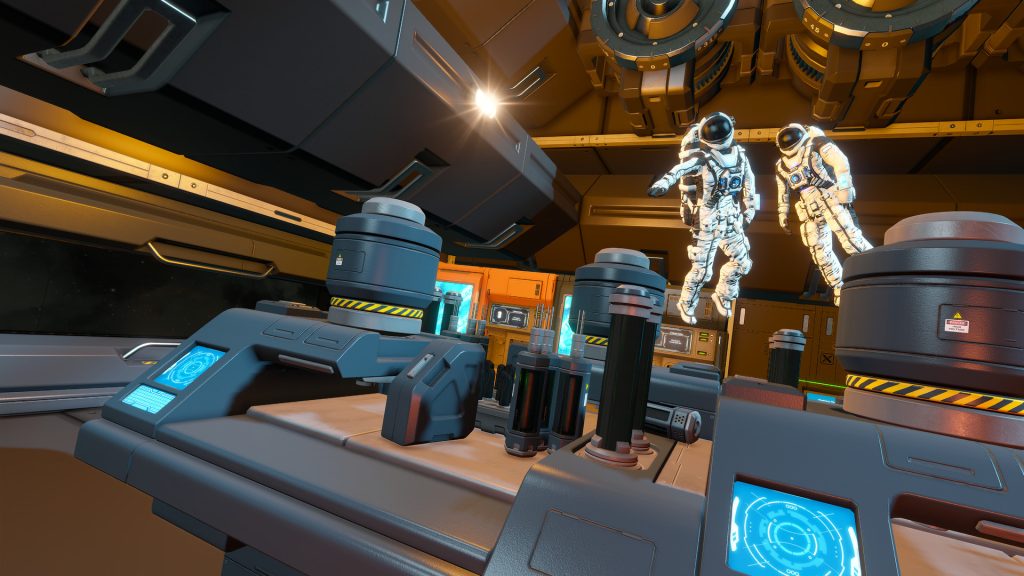Blocks
Block Properties
Large and Small Blocks
Blocks in Space Engineers can either be constructed Small, and so intended to be used on Small Ships, or Large and so intended to be used on Large Ships and Stations. Most (but not all) blocks can be built in either size, and so have two completely different sets of weights, volumes, and build recipes depending on which size is ultimately created. It is thus important to know what context you are looking to use a particular block in, or you might find your required Components to be off by a factor of 100!
Certain Blocks, such as the Medium Cargo Container, cannot be built on Large Ships or Stations. Others, such as the Refinery, cannot be built on Small Ships.
Blocks as Measurement
When speaking of “blocks”, one can either be referring to the items listed on this page, or one might instead be referring to units of distance. A single Large Block has an edge length of 2.5 meter and thus a volume of 15.625 m³, while a single Small Block has an edge length of 0.5 meter and thus a volume of 0.125 m³ (the Engineer avatar is about 1.8 meters tall, for reference).[1] This means that measurement changes based on context; a ship being 10 blocks long might be puny if a small ship (at 5 meters long, it’s a large bathtub) but if referring to a large ship, 10 blocks is 25 meters long and is much more metal to worry about.
Rendering
The less polygons your display card needs to deal with, the faster it will render. Modern display cards are capable of rendering thousands upon thousands of polygon without much effort. However, if you have an older card, you’ll feel the impact more than with a newer card.
There are two different kinds of blocks: Armor blocks and non-armor blocks (entity blocks – Gyroscopes, Cockpits, Refineries etc). The entity blocks are the ones that has LODs (Level Of Detail).
The Armor blocks do not have LODs, they consist of “sides”. These sides are actually removed as you create larger pieces, meaning that only the visible portions are rendered. Consider if you place two cubes against each other; two faces would be hidden. These faces are removed by the game. Which means armor blocks are in general a lot more efficiently rendered. They consist of a lot less polygons to begin with obviously, being cube-derived.
As you move away from an armor or entity block, it’s graphical representation is periodically replaced with a simpler model, so that the game doesn’t have to render as many polygons. How many LOD levels there are depends on each individual model.
- It should be noted however in the early stages of development, that the majority of blocks currently in the game as of Update 01.141 are still placeholders.
Performance
When speaking of performance, most of SE’s performance issues has less to do with rendering and more to do with the game logic. In other words, background processing and calculating the game does.
Armor blocks have the least impact to overall performance, for two reasons: Polygon count and logic. Armor blocks have no logic assigned to them what so ever. Some entity blocks, like the Refinery for example, has game logic that changes Ore into Ingots. This requires CPU power, albeit not much. But if you have for example, a hundred refineries, chances are you’re gonna see the impact of it. Rendering wise the refinery obviously has more polygons than the equivalent number of armor blocks.
It should also be noted, that distance from the player(s) has no real meaningful impact when it comes to logics being used in the background. In other words, if you have a refinery, no matter how far away you fly away from it, the actual conversation of ore to ingots will still impact you. However, the rendering of the entity obviously won’t.
Much of the performance issues can centralize on directly to how many things are in your world.
To expand on this further … if we imagine one large ship and several small ones. If we assume the number and types of blocks of the large ship equal the total number of the smaller ones, the performance impact of the larger ship is actually smaller than several small ones: The large ship is a single physics entity, the small ones each have their individual ones. Hence, the multiple small ones should be heavier on the engine than the single large one, because there’s less to compute.
List of Blocks
Both Large-grid and Small-grid blocks are listed here.
![]()
![]()
![]()
![]()
![]()
![]()
![]()
![]()
![]()
![]()
![]()
![]()
![]()
![]()
![]()
![]()
![]()
![]()
![]()
![]()
![]()
![]()
![]()
![]()
![]()
![]()
![]()
![]()
![]()
![]()
![]()
![]()
![]()
![]()
![]()
![]()
![]()
![]()
![]()
![]()
![]()
![]()
![]()
![]()
![]()
![]()
![]()
Freight 3
![]()
![]()
![]()
![]()
![]()
![]()
![]()
![]()
![]()

